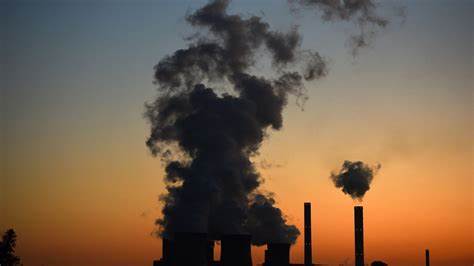
GENEVA: Greenhouse Gas Bulletin published by the World Meteorological Organisation (WMO) has recorded the highest yearly increase in methane concentrations in 2021 since systematic observations started nearly 40 years ago. Although the cause of the exceptional rise is yet unknown, the report suggests that both biological and human-caused processes are to blame. The increase in carbon dioxide levels between 2020 and 2021 was also greater than the average yearly growth rate over the previous ten years, and the levels are expected to continue rising until 2022, said the WMO.
According to the paper, between 1990 and 2021, the radiative forcing—or warming effect—caused by greenhouse gases, which remain in the atmosphere for a long time, has increased by about 50 per cent, primarily due to an increase in carbon dioxide (CO2).
To be more precise, CO2, methane, and nitrous oxide concentrations all exceeded 400 parts per million (ppm) last year. These figures represent, in turn, 149, 262, and 124 per cent of pre-industrial levels, which was before human activities began upsetting the natural equilibrium of these gases in the atmosphere. The main heat-trapping gases’ concentrations are still increasing, and this includes methane levels, which are increasing at a record rate.
As long as emissions persist, the world’s temperature will rise, according to WMO. Given that CO2 has a long half-life in the atmosphere, even if emissions are quickly reduced to net zero, the temperature rise that has already happened will last for decades. The concentrations of greenhouse gases, which are different from emissions since they are absorbed by sinks like the ocean and biosphere, are what are being measured in this report’s concentrations, according to scientists.
The Bulletin notes that following lockdowns caused by COVID in 2020, global CO2 emissions have increased, mostly due to the production of fossil fuels and cement. About 48 per cent of the total emissions caused by human activity between 2011 and 2020 accumulated in the atmosphere, 26 per cent in the water, and 29 per cent on land. The ability of land ecosystems and seas to act as sinks may become less effective in the future, decreasing their capacity to absorb carbon dioxide and serve as a buffer against more significant temperature increases, experts warn. In some regions of the planet, land that used to collect carbon has begun to release the gas back into the atmosphere.
According to scientists, methane is the second biggest cause of climate change and has a complex network of overlapping sources and sinks, making it challenging to categorise emissions by source type. Since 2007, the amount of methane in the atmosphere has been rising rapidly. Since the beginning of systematic registry in 1983, the yearly increases in 2020 and 2021 are the highest.
Nitrous Oxide which is another potent source of climate change has both natural (57 per cent) and anthropogenic (43 per cent) sources. Oceans, soils, biomass burning, fertiliser use, and various industrial activities, produce nitrous oxide into the atmosphere. According to WMO, the increase between 2020 and 2021 was somewhat higher than the increase seen between 2019 and 2020 and more than the average yearly growth rate over the previous ten years.
WMO is currently collaborating with the larger community to create a structure for ongoing, globally coordinated greenhouse gas monitoring.

